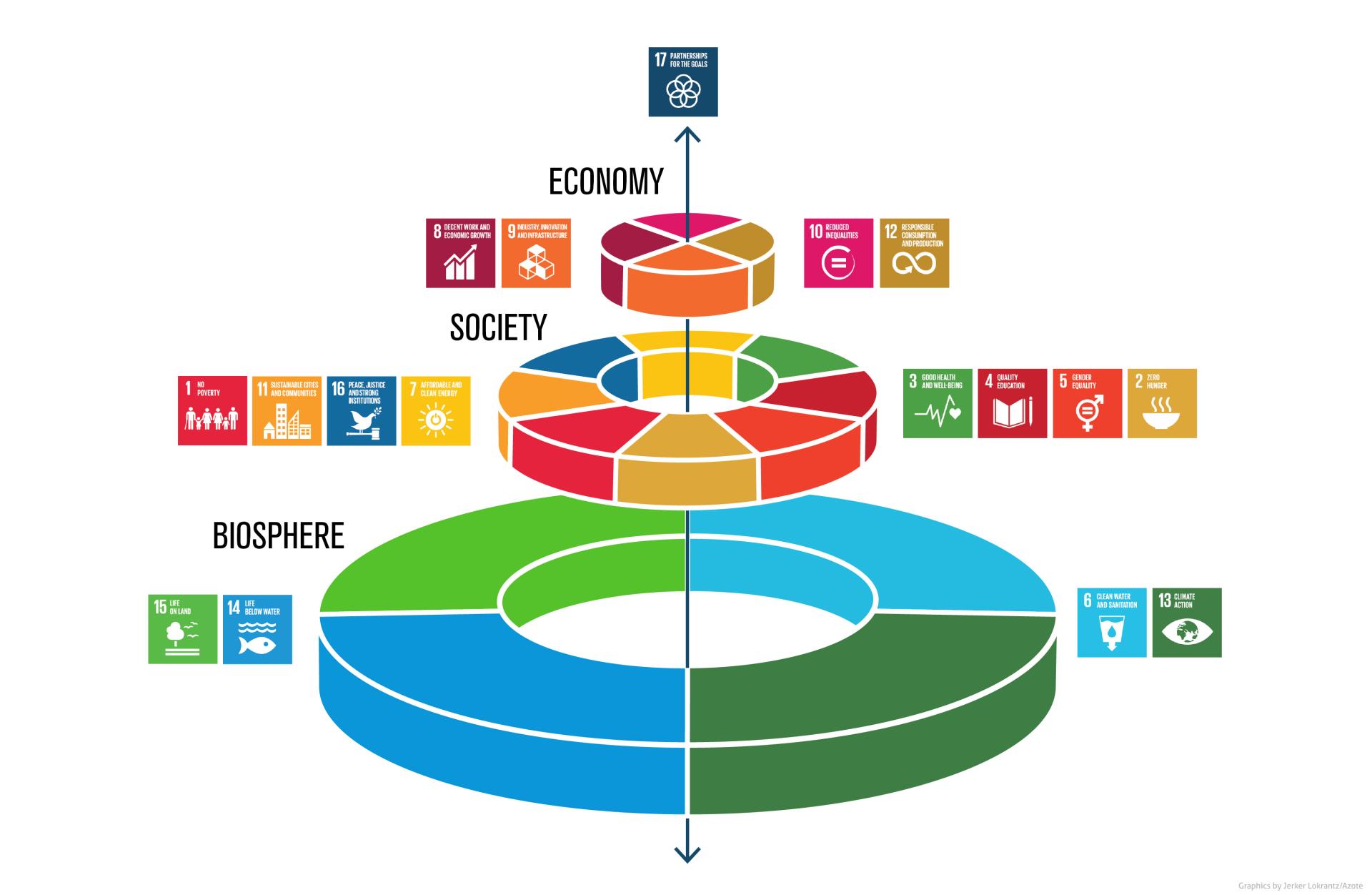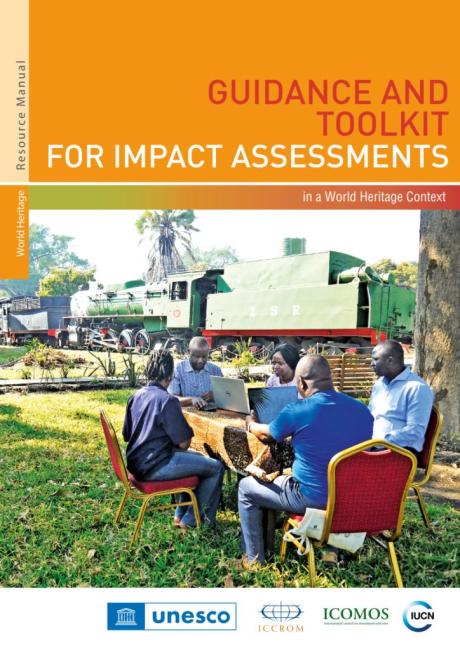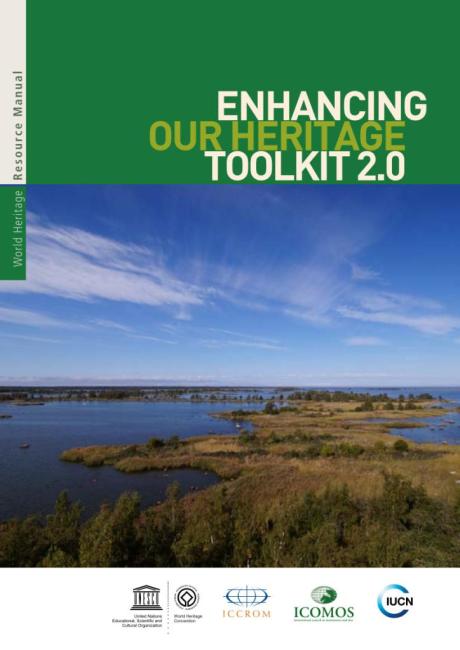Services and benefits – how heritage contributes to human well-being, quality of life and sustainable development
- Every heritage place generates a range of services and benefits, which are advantages that flow to people from the existence and conservation of heritage. These can include economic benefits; provisioning ecosystems services such as firewood, fisheries, raw materials, climate regulation, regulation of water flows, and water purification, opportunities for recreation, and many more.
- It is important to understand who benefits from heritage conservation and who bears its costs. Associated communities and those contributing to the protection of the heritage place are the ones who should gain the most benefits.
- The World Heritage All inherited assets which people value for reasons beyond mere utility. Heritage is a broad concept and includes shared legacies from the natural environment, the creations of humans and the creations and interactions between humans and nature. It encompasses built, terrestrial, freshwater and marine environments, landscapes and seascapes, biodiversity, geodiversity, collections, cultural practices, knowledge, living experiences, etc. Sustainable Development Policy shows that the conservation of World Heritage All inherited assets which people value for reasons beyond mere utility. Heritage is a broad concept and includes shared legacies from the natural environment, the creations of humans and the creations and interactions between humans and nature. It encompasses built, terrestrial, freshwater and marine environments, landscapes and seascapes, biodiversity, geodiversity, collections, cultural practices, knowledge, living experiences, etc. properties contributes to the human well-being of local and global communities so that wider societal changes, objectives and priorities must be applied to heritage management.
- When managed well, heritage places can continuously benefit society in many different ways, including contributing to sustainable development and to global agendas such as climate action, biodiversity and cultural diversity.
Services and benefits refer to the advantages that flow to people and communities from the existence and conservation of heritage. Each heritage place will generate a diverse range of services and benefits.
The idea of caring for a place is central to heritage and goes beyond utilitarian reasons, as heritage places hold collective meaning for communities, nations, or even humanity as a whole, in the case of World Heritage. Therefore, the primary goal of heritage conservation is to ensure that those places continue to exist and that their heritage values are maintained. When managed well, heritage places can continuously benefit society in many different ways, including by contributing to sustainable development.
When discussing the benefits generated by the conservation of heritage places, it is important to distinguish ‘benefits’ from ‘heritage values’. Heritage values refer to qualities and meanings – why people consider a heritage place to be important and wish to protect it. For example, economic profits gained from increased tourism to a
World Heritage property
A cultural, natural or mixed heritage place inscribed on the World Heritage List and therefore considered to be of OUV for humanity. The responsibility for nominating a property to the World Heritage List falls upon the State(s) Party(ies) where it is located. The World Heritage Committee decides whether a property should be inscribed on the World Heritage List, taking into account the technical recommendations of the Advisory Bodies following rigorous evaluation processes.
When used as a general term, World Heritage refers to all the natural, cultural and mixed properties inscribed on the World Heritage List.
are not recognized as a heritage value, but as a benefit derived from the conservation of the heritage place. To avoid confusion, the general term ‘benefits’ is preferred and used to refer to the advantages that flow to people and communities from the existence and conservation of places but beyond the reasons why they value it as their heritage.
This distinction is especially important when managing World Heritage properties. It is the maintenance of the heritage values of a place and conservation of its attributes that is the priority, as only in this way will the place continue to generate services and benefits to local communities and wider society. Therefore, when managing heritage places it is important to ensure that the provision of services and benefits does not take precedence over the protection of the heritage values. Instead, the heritage values and benefits should be understood as complementary. As such, the management system for the heritage place should be designed to ensure both, in ways that are mutually supportive and without compromising OUV.
When thinking about benefits, it could be useful to identify those that nature provides to humans. Ecosystem services include firewood, fisheries, raw materials, natural medicine and water but also climate regulation, water purification, soil stabilization, as well as opportunities for recreation, among others. The term ‘ecosystem services’ is used to describe the services that are produced as a result of ecosystem processes and functions such as soil formation, nutrient cycling and primary production, which then flow to people in the form of benefits or goods, supporting human well-being.
Many World Heritage properties, cultural and natural, but especially those protecting large intact natural systems, also have a significant role to play in combating climate change and the closely related issues of species extinction and biodiversity loss. Their contribution to human development agendas, such as the Sustainable Development Goals, must also be recognized.

Figure 3.8 Heritage All inherited assets which people value for reasons beyond mere utility. Heritage is a broad concept and includes shared legacies from the natural environment, the creations of humans and the creations and interactions between humans and nature. It encompasses built, terrestrial, freshwater and marine environments, landscapes and seascapes, biodiversity, geodiversity, collections, cultural practices, knowledge, living experiences, etc. values and benefits should be understood as complementary and the management system for the heritage place should be designed to ensure both, in ways that are mutually supportive and without compromising OUV.
When trying to understand the services and benefits that come from a heritage place, it is also critical to identify who benefits (or should benefit), who bears the costs and by how much. This is important in terms of respecting rights-holders and empowering them to ensure equitable governance of the heritage place. Highlighting benefits generated by heritage can also increase support for its protection. In this context, it is important to assess if the associated communities and those contributing to the protection of the heritage place, are the ones who draw the most benefits or if these benefits are largely being enjoyed by other actors.
While there are various methods to identify the range of services and benefits deriving from heritage places, understanding the beneficiaries and who bears the costs is often more complex. One of the main difficulties is that the flow of benefits often extends beyond the heritage place. For instance, the provision of water derived from a protected forest can be used by communities far downstream. Likewise, the revenues from guided tours in an urban area may go to a tour operator located in another
region or even another country. The provision of employment through management and tourism can be a source of improved economic revenue for local communities. The benefits considered for future generations or to other species must also be considered.
Insights about beneficiaries are place-dependent, requiring additional data collection and consultation. Identifying and respectfully engaging rights-holders and stakeholders from the beginning in services and benefits assessment can help to create a detailed picture of the dynamics of costs and benefits at different levels. Sometimes, there are conflicting needs: one group’s benefit might come at another group’s cost. For example, recreational and visitor opportunities can come at the expense of reduced quality of life for residents. Or it may be necessary to reduce the provision of certain benefits in the short term, in order to enhance them in the future, as in the case of the need to manage fish stocks notwithstanding the short-term impact on local fishing communities. In such cases, identifying and collaborating with affected groups and understanding the complex interactions between costs and benefits is the first step to resolving potential conflicts and achieving mutually advantageous outcomes. As noted above, understanding who bears the costs of implementing certain conservation measures is as important as who benefits from the protection of the heritage place; particularly, when it may affect people’s subsistence needs, beliefs and quality of life. In such cases, setting up compensation mechanisms may be necessary.

Figure 3.9 Here the Sustainable Development Goals have been positioned to highlight the way that economic and social targets (which includes cultural heritage) are embedded within their environmental context (which includes natural heritage and cultural uses). Success is dependent on progress in all spheres and cannot be built on individual goals without consideration of their impacts on other targets, such as heritage. Source: Stockholm Resilience Centre.
Effectively engaging and collaborating with rights-holders and stakeholders, to understand their priorities, needs and their degree of dependence on the heritage place, is essential for making informed and balanced management decisions and to help avoid conflicts.
Economic benefits are often sought when nominating properties to the World
Heritage
All inherited assets which people value for reasons beyond mere utility. Heritage is a broad concept and includes shared legacies from the natural environment, the creations of humans and the creations and interactions between humans and nature. It encompasses built, terrestrial, freshwater and marine environments, landscapes and seascapes, biodiversity, geodiversity, collections, cultural practices, knowledge, living experiences, etc.
List. Income directly and indirectly generated by uses of the heritage place can provide much-needed resources for conservation and improved living standards for local people (including through employment). Studying the flows of economic benefits can be useful to fully understand these inter-relationships. While economic considerations are likely to dominate appraisals of the services and benefits, a detailed understanding of how heritage places contribute to society at other levels is essential to gather support for conservation. For World
Heritage
All inherited assets which people value for reasons beyond mere utility. Heritage is a broad concept and includes shared legacies from the natural environment, the creations of humans and the creations and interactions between humans and nature. It encompasses built, terrestrial, freshwater and marine environments, landscapes and seascapes, biodiversity, geodiversity, collections, cultural practices, knowledge, living experiences, etc.
properties, it is critical to balance, and if necessary, reconcile, the expectations of local communities to access and share benefits, with the responsibilities assumed by
States Parties
The countries which have adhered to the Convention Concerning the Protection of the World Cultural and Natural Heritage (
World Heritage Convention
The Convention Concerning the Protection of the World Cultural and Natural Heritage is an international treaty adopted by the UN in 1972 that defines the kind of natural or cultural sites which can be considered for inscription on the World Heritage List for their Outstanding Universal Value for all humankind. Commonly known as the World Heritage Convention, it establishes how the international community as a whole is responsible for
the protection of such heritage and sets out the duties of States Parties in identifying potential sites that may be eligible for inscription onto the World Heritage List and their role in protecting and preserving them. By signing the Convention, each country pledges to conserve not only the sites situated on its territory that have been recognized as being of Outstanding Universal Value, but also to protect its national heritage and to be involved in international efforts to protect, conserve and promote the heritage of humankind.
) (UNESCO, 1972).
to protect the heritage for the whole of humanity, including future generations.
Recognition of urgent issues that are affecting the entire world, from poverty and increasing social inequalities to the climate and biodiversity loss emergencies, has led to a series of national and global responses related to conservation and sustainable development. The concept of sustainable development was described by the Brundtland Commission as development that meets the needs of the present without compromising the ability of future generations to meet their own needs. The United Nations is currently leading global efforts through its 2030 Agenda for Sustainable Development with its 17 Sustainable Development Goals, and the World Heritage Committee is committed to maximizing the contribution that conservation of World Heritage properties can make.
The World Heritage Sustainable Development Policy adopted in 2015 makes clear that the conservation of World Heritage properties contributes to the human well-being of local and global communities in the following four dimensions:
- environmental sustainability by recognizing how heritage places help protect biological and cultural diversity and provide essential ecosystem services and benefits, as well as strengthening resilience to natural hazards and climate change;
- inclusive social development by promoting human rights, achieving gender equality and ensuring the involvement of Indigenous Peoples and local communities in the management of heritage places, as well as enhancing their quality of life;
- inclusive economic development by ensuring employment, income and livelihoods; promoting economic investment, quality tourism and strengthening capacity-building, innovation and local entrepreneurship;
- fostering peace and security by promoting understanding, dialogue and conflict resolution, ensuring conflict prevention, the protection of heritage during times of conflict and post-conflict recovery.
The policy shows that wider societal changes, objectives and priorities must be applied to heritage management. Management of heritage places must draw on knowledge of the social, economic, cultural and environmental context of each place, recognizing that issues and goals at larger regional and national scales are often the underlying causes behind many of the factors affecting World Heritage properties. More often than not, factors that undermine the conservation of heritage are driven by policies which promote development that is unsustainable and fails to embrace an approach that allows heritage conservation and development to coexist.
World Heritage also has a uniquely important contribution to make to other global agendas. Studies have shown that heritage can, and should, play its part in responding to the climate crisis in a multitude of ways. For instance, natural World Heritage properties make a disproportionately large contribution to carbon storage and sequestration. World Heritage properties also conserve the world’s most significant glaciers, which are particularly threatened by climate change. Historic buildings are important sources of embodied carbon (all the carbon emissions from construction materials, the building process, use of internal fixtures/fittings as well as eventual demolition), thus there is vast potential for operational carbon savings through retrofitting and adaptation.
The Policy Document on Climate
Action
A policy, plan, programme or project.
for World Heritage (2023) provides high-level guidance on enhancing the protection and conservation of World Heritage through the comprehensive adoption of climate action measures. It provides an outcome-oriented policy framework to develop goals and targets at national and heritage site levels which can be reflected in updating the various management processes and plans. The framework adopts a long-term vision with four World Heritage Climate
Action
A policy, plan, programme or project.
goals, that requests
States Parties
The countries which have adhered to the Convention Concerning the Protection of the World Cultural and Natural Heritage (
World Heritage Convention
The Convention Concerning the Protection of the World Cultural and Natural Heritage is an international treaty adopted by the UN in 1972 that defines the kind of natural or cultural sites which can be considered for inscription on the World Heritage List for their Outstanding Universal Value for all humankind. Commonly known as the World Heritage Convention, it establishes how the international community as a whole is responsible for
the protection of such heritage and sets out the duties of States Parties in identifying potential sites that may be eligible for inscription onto the World Heritage List and their role in protecting and preserving them. By signing the Convention, each country pledges to conserve not only the sites situated on its territory that have been recognized as being of Outstanding Universal Value, but also to protect its national heritage and to be involved in international efforts to protect, conserve and promote the heritage of humankind.
) (UNESCO, 1972).
to take a range of actions in areas such as assessing climate change risks, climate change adaptation, climate change mitigation, knowledge-sharing, capacity-building and awareness, and advocating for transformative change.
Lastly the importance of heritage in safeguarding global biodiversity must be stressed. The role of the
World Heritage Convention
The Convention Concerning the Protection of the World Cultural and Natural Heritage is an international treaty adopted by the UN in 1972 that defines the kind of natural or cultural sites which can be considered for inscription on the World Heritage List for their Outstanding Universal Value for all humankind. Commonly known as the World Heritage Convention, it establishes how the international community as a whole is responsible for
the protection of such heritage and sets out the duties of States Parties in identifying potential sites that may be eligible for inscription onto the World Heritage List and their role in protecting and preserving them. By signing the Convention, each country pledges to conserve not only the sites situated on its territory that have been recognized as being of Outstanding Universal Value, but also to protect its national heritage and to be involved in international efforts to protect, conserve and promote the heritage of humankind.
has been highlighted within the 2022 Kunming-Montreal Global Biodiversity Framework. This is the globally agreed strategy to address the alarming loss of biodiversity by 2030 and it clearly positions the crucial role of heritage, heritage places and World Heritage, as one of the eight biodiversity-related Conventions, in addressing this global challenge. It is worth highlighting that the newly adopted Global Biodiversity Framework mentions ecosystem integrity and, given that integrity is a key pillar of OUV, the
World Heritage Convention
The Convention Concerning the Protection of the World Cultural and Natural Heritage is an international treaty adopted by the UN in 1972 that defines the kind of natural or cultural sites which can be considered for inscription on the World Heritage List for their Outstanding Universal Value for all humankind. Commonly known as the World Heritage Convention, it establishes how the international community as a whole is responsible for
the protection of such heritage and sets out the duties of States Parties in identifying potential sites that may be eligible for inscription onto the World Heritage List and their role in protecting and preserving them. By signing the Convention, each country pledges to conserve not only the sites situated on its territory that have been recognized as being of Outstanding Universal Value, but also to protect its national heritage and to be involved in international efforts to protect, conserve and promote the heritage of humankind.
is well situated to respond to this key global mandate. Many World Heritage properties cover huge areas of land, freshwater and sea, which can showcase the fact that well managed conserved areas at scale can contribute significantly to global efforts to combat climate change.
- Do management objectives address how the property can contribute to other societal goals, such as sustainable development, community well-being and the generation of services and benefits?
- Have the main benefits generated from the conservation of
World Heritage property
A cultural, natural or mixed heritage place inscribed on the World Heritage List and therefore considered to be of OUV for humanity. The responsibility for nominating a property to the World Heritage List falls upon the State(s) Party(ies) where it is located. The World Heritage Committee decides whether a property should be inscribed on the World Heritage List, taking into account the technical recommendations of the Advisory Bodies following rigorous evaluation processes.
When used as a general term, World Heritage refers to all the natural, cultural and mixed properties inscribed on the World Heritage List. been identified? - Who currently benefits from these?
- Who should be benefiting?
- Who bears the main costs of conserving the property and how is that balanced with who benefits from it?
- How can development be truly sustainable and reconciled with heritage conservation to ensure they both coexist, at the level of the property?
- What measures are in place to recognize the contributions the heritage place makes to the local economy?
- UNESCO (2015). Policy Document for the Integration of a Sustainable Development Perspective into the Processes of the
World Heritage Convention
The Convention Concerning the Protection of the World Cultural and Natural Heritage is an international treaty adopted by the UN in 1972 that defines the kind of natural or cultural sites which can be considered for inscription on the World Heritage List for their Outstanding Universal Value for all humankind. Commonly known as the World Heritage Convention, it establishes how the international community as a whole is responsible for
the protection of such heritage and sets out the duties of States Parties in identifying potential sites that may be eligible for inscription onto the World Heritage List and their role in protecting and preserving them. By signing the Convention, each country pledges to conserve not only the sites situated on its territory that have been recognized as being of Outstanding Universal Value, but also to protect its national heritage and to be involved in international efforts to protect, conserve and promote the heritage of humankind. . - UNESCO (2023). Policy Document on Climate Action A policy, plan, programme or project. for World Heritage.
- ICOMOS SDG Working Group (2021). Heritage and the Sustainable Development Goals: policy guidance for heritage and development actors, Paris (France), ICOMOS.
- IUCN, BfN, UNEP, WCMC (2014). The benefits of natural World Heritage : identifying and assessing ecosystem services and benefits provided by the world’s most iconic natural places, Gland (Switzerland), IUCN.
- PANORAMA Solutions for a Healthy – Planet, Nature-Culture Solutions.
- UNESCO World Heritage Canopy.



